I wasn’t really sure what to make today. It’s a rainy, windy, autumnal day, and I don’t think there’s much chance of seeing the sun. I needed something warm, comforting, and infused with a bit of sunshine.
Upon scouring the cupboards I decided that today was the day to make a bowl of warm, creamy polenta, and while I was at it, to pair it with one of my favourite flavour combinations, coconut and pineapple.
I’ve been using polenta quite frequently recently as an ingredient in baking mostly, but I had never actually made polenta in the traditional way. Quite an exciting culinary adventure!
Polenta is basically a porridge made of corn meal (maize) which is sometimes cooked until solid, and sometimes left porridge-y. It is one of Italy’s national dishes and a proud part of its heritage, and very similar to “grits” of the American South.
Before corn was first brought over to Europe from the Americas in the 16th century polenta described porridge made from a variety of things from grains to chestnut flour and even pulses and chick peas. Apparently polenta was the staple food for the ancient Roman Legions, with the base grain or pulse changing from one thing to another through the eras. Buckwheat polenta was a firm favourite for a long time.
But after corn made an appearance it provided an abundant crop that was easily grown in many climates of Europe. Polenta soon became the “peasant food” on which the poor of large parts of Europe and America had to survive. It’s a filling and protein dense food, rich in iron and phosphorus, which was of benefit to the people who relied on it. However despite the nutritious nature of corn, in order for the vital nutrient niacin (vitamin B3) within the corn to become nutritionally available the dried kernels have to be treated with an alkali, a fact which was not discovered until the 1930’s, and because at that time large parts of the population were eating little else, the occurrence of niacin deficiency (pellagra) became wide spread, its effects devastating. By the late 19th century pellagra was epidemic in parts of Europe and the American South. Thankfully in the 1930’s hominy, the product of this necessary alkaline treatment, was created and is an important food to this day in Central America and the American South. Ground hominy becomes masa harina, the flour which is used to make corn tortillas.
I feel exceedingly fortunate to live in a time when medical and nutritional knowledge is much further advanced than in those mean times. I also feel exceedingly fortunate to have all that I do. We are in no way rolling in cash, but our life is comfortable and free from the fear of malnutrition and hunger. My boys live a happy and healthy life, and that is a real gift for which I am forever thankful. So while cornmeal may not in it’s natural state offer vitamin B3, it’s is a vitamin that is abundantly available in other foods that we eat such as certain nuts and seeds, avocado and some mushroom. Cornmeal is a really nutritious food, a great addition to a balanced diet, and a wonderful gluten free option.
Hmmm…I hadn’t intended this post to become a long-winded history lesson. I find the history of food seriously interesting and have now subjected you to the symptoms of that fascination.
Anyway, back to the dish.
I decided to include coconut to the dish, but rather than using coconut milk, which was my first thought, I opted instead to stir through some creamed coconut (also known as coconut butter, but different than coconut cream!) and cook the polenta pineapple juice.
So here is creamy tropical polenta, a fusion of autumnal comfort and bright tropical flavours, loaded with protein, fiber, healthy fats, vitamins and minerals. I even ventured into the gale force storm to get some lovely flowers for the pictures (you’d never guess that they were nearly blown flat from the summery-ness of their colours). Tropical Shetland autumn in a glass!! (There’s a phrase I bet has never been uttered before…)
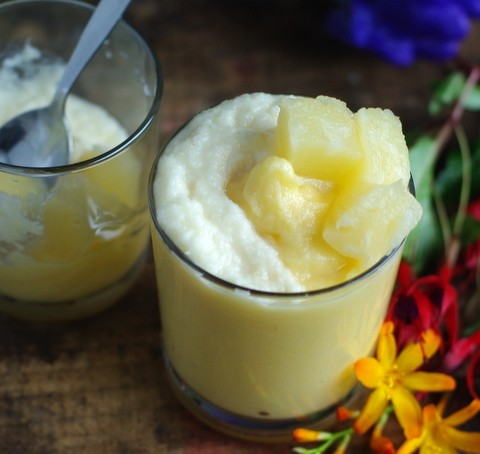

- 100g fresh pineapple, chopped, or tinned (make sure it’s in juice and not syrup), plus a bit to serve
- 25g creamed coconut
- 50g fine polenta
- 150mL pure pineapple juice
- 130mL water
- 25g creamed coconut
- First make the puree. Add the pineapple chunks and creamed coconut to a blender and blitz until fairly smooth, but still with a tiny bit of texture. Set aside
- To make the polenta, place the polenta, pineapple juice and water into a small pot over medium heat. Allow it to heat through and cook, whisking constantly, until it’s thickened to the point that you can make peaks in it.
- Remove from the heat and stir in the creamed coconut.
- Dish the polenta out into one or two small bowls or glasses. Top it with the puree and a few pineapple chunks. You could also layer it doing polenta, puree, polenta.
- Serve immediately.

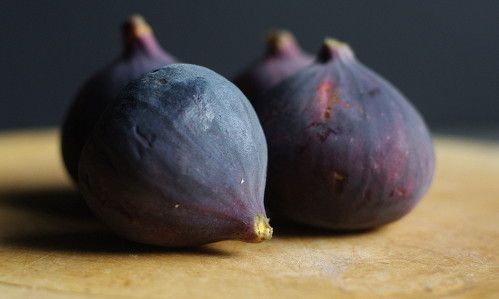
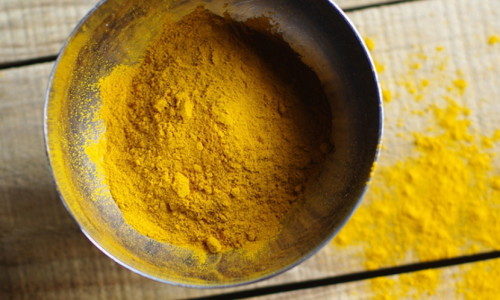
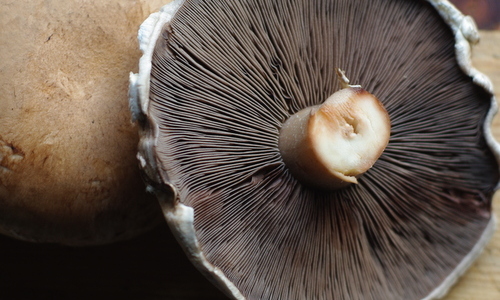
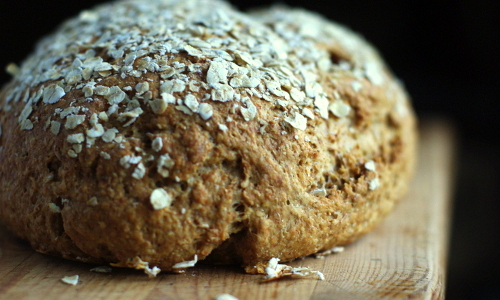

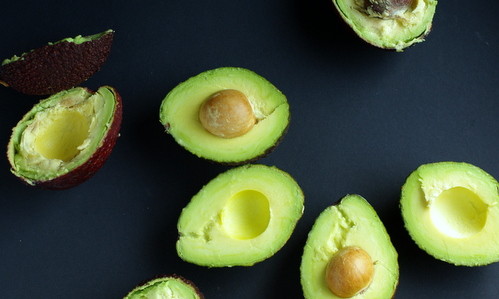
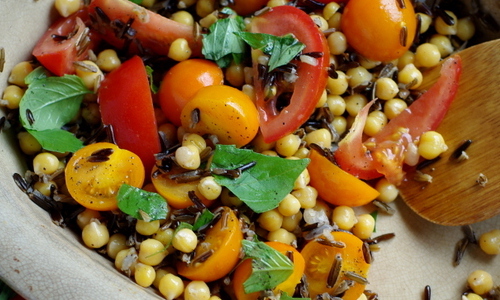
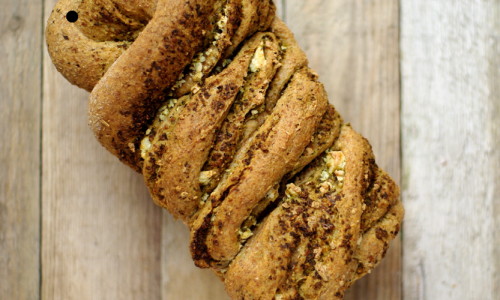
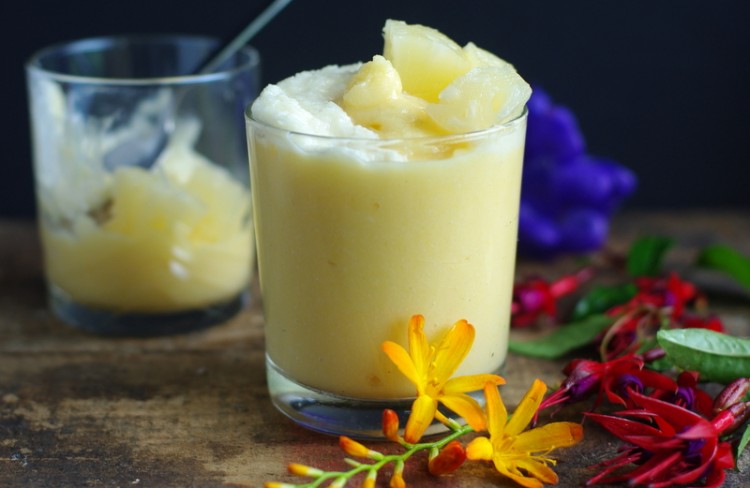
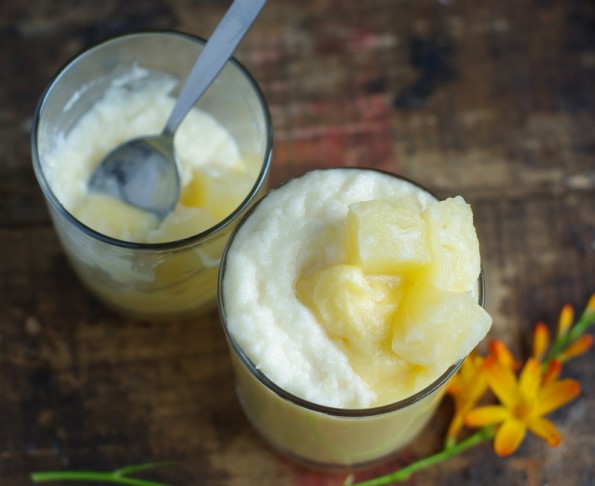
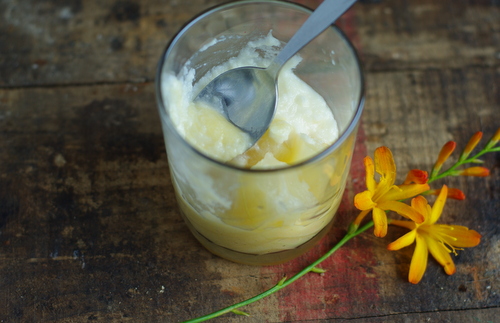
Tropical Shetland autumn….in a glass! Made me smile 🙂 our weathers certainly been anything but tropical! What a lovely, bright pud to brighten our day! Wonder if the creamed coconut is easily available in our supermarkets here?
I know!! I ran out into torrential rain and gale force winds to get some flours for the pictures…tropical indeed! Haha! Creamed coconut is available here!! They carry it in the Indian cooking section at Tesco, and at Scoop they’ve got it, but call it coconut butter! It’s also really easy to make yourself if you’ve got a blender. You just blitz some desiccated coconut for about 10 minutes. It becomes powdery and you keep blending and suddenly it releases its oils and starts to get really creamy, then you just leave it going until it’s as smooth as you like, or your blender will allow (not very in mine 😉 ) ….and, if you blitz some chocolate into it and then spread it on toast……heaven!!